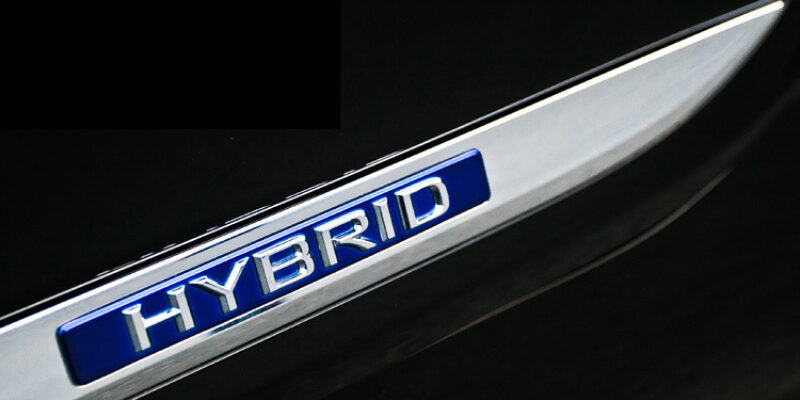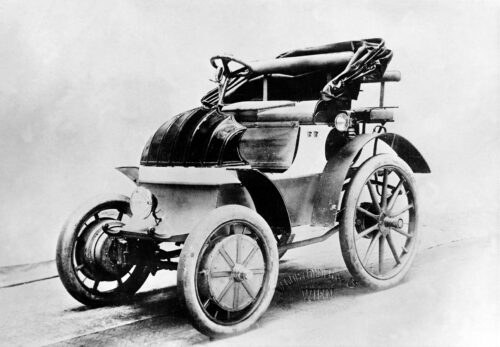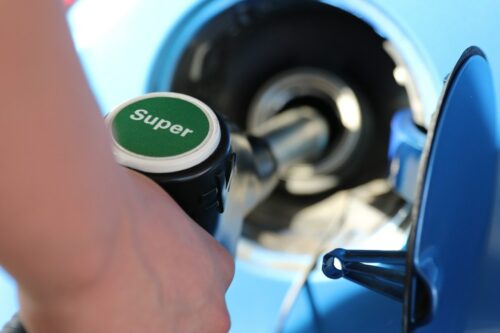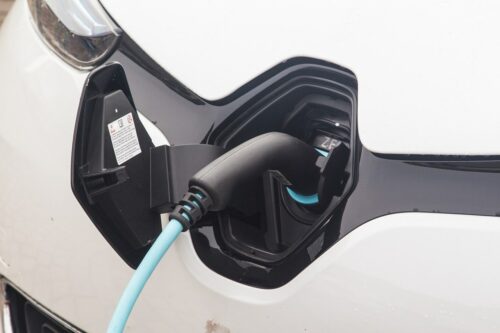
- Hybrid cars were invented by Jacob Lohner and Ferdinand Porsche in 1900
- The cars combine electric motors with a traditional diesel or petrol engine
- This mix of motors sets hybrids apart from electric cars
- Combining electric and traditional motors typically means lower fuel consumption
- They are considered to be more environmentally friendly
It’s official: hybrid car sales are booming. The UK is one of the fastest-growing markets for low-emission vehicles. But with so many hybrids around, it’s easy to get bogged down in the technical jargon.
So we’ve put together the ultimate guide to hybrid cars, explaining exactly how the different types work. Read on for all the answers to your most frequently asked questions.

WHAT IS A HYBRID CAR?
A hybrid car uses both a traditional petrol engine and an electric motor as power sources.
The simplest hybrid car definition is that it’s a cross between a petrol or diesel car and an electric car. But they are not considered electric cars, because they have a petrol engine too.
Hybrid cars have become popular because they use less petrol than standard cars, making them cheaper to run and better for the environment.
ARE THERE ANY DIESEL HYBRIDS?
Diesel engines are more fuel efficient than petrol ones, so in theory they should make very efficient hybrids. But in fact there are very few diesel hybrids, because combining diesel engines with electric motors has proven to be complicated and expensive, offsetting much of the fuel savings.
WHO INVENTED HYBRID CARS?

The history of the hybrid car is much longer than you might think – it was first invented in Austria in 1900!
It was the brainchild of a coach builder from Vienna called Jacob Lohner, who didn’t like noisy, smelly diesel-powered vehicles. He employed a young engineer named Ferdinand Porsche to devise an electric solution. Porsche invented an electric wheel-hub motor that actually fit inside the four wheels.
But the two men wanted a greater range and power for their car, so Porsche added an internal combustion engine that ran a generator to power the battery. And so the hybrid car was born.
The Lohner-Porsche Elektromobil was first shown to the public at the Paris Exposition in 1900. Unfortunately it wasn’t very popular, and Porsche went on to found the eponymous supercar company instead.
Almost a hundred years later, Toyota invented its famous Prius hybrid, which was the world’s first production hybrid car. It came out in Japan in 1997, and to the rest of the world in 2001.
HOW DO HYBRID CARS WORK?
There are four main types of hybrid car, and each works slightly differently.
- Series hybrid cars
A series hybrid uses the electric motor to drive the wheels, and the petrol engine powers a generator that produces the electricity and charges the battery. The petrol engine never propels the car forward – it simply provides the energy for the electric motor.
Series hybrids can use the two power sources together, or they can drive on just battery power for short distances. This is what makes them so efficient in stop-and-go city traffic. The petrol engine kicks in when the battery gets low or the car needs more power for a faster speed.
- Parallel hybrids
In a parallel hybrid, the petrol engine and electric motor are coupled so they work together to power the car. The petrol engine does most of the work, and the electric motor provides a boost.
The main difference compared to series hybrids is that the petrol engine powers the car instead of generating electricity. This type is the cheapest to produce and buy but less fuel efficient than ‘full’ series hybrids.
- Series-parallel hybrids
These are a combination of the first two types. The car can be driven purely by petrol, purely by electric or any combination of the two. The petrol engine also charges the battery like a series hybrid.
In normal driving the petrol engine is the primary power source, with the electric motor helping to provide a boost, for example during overtaking. But in slow, city traffic the battery takes over. So series-parallel hybrids do run just on electric power, but only at low speeds.
- Plug-in hybrid cars
A plug-in hybrid car, often called a PHEV (plug-in hybrid electric vehicle) is a modern configuration that’s closer to an electric car. The battery can be charged by the petrol engine or it can be plugged into an external power source like a charging station.
The batteries are generally much larger than in standard hybrids, meaning PHEVs can travel further purely on battery power.
WHY IS A HYBRID CAR MORE FUEL EFFICIENT?

Hybrids use a combination of petrol and electricity to power the car. This means they burn less fuel than normal petrol cars, so they are more efficient to run. This also means they have lower greenhouse gas emissions, making the car tax cheaper and benefiting the environment.
However, the real-life level of fuel efficiency, emissions and miles per gallon (MPG) achieved all vary depending on the type of hybrid, as well as speed and driving style.
The cars also use other technologies to increase fuel efficiency, such as Continuously Variable Transmission (CTV). This automatically optimises engine speeds and gear changes for maximum efficiency.
WHAT IS STOP-START TECHNOLOGY?
Another fuel efficiency trick in hybrid cars is stop-start technology. This allows the petrol engine to be shut down when the car is stationary, saving fuel in traffic.
These days conventional cars are also using stop-start technology to save fuel, but it isn’t nearly as efficient as driving a hybrid.
HOW DO HYBRID CARS CHARGE THE BATTERY?

This depends on the type of hybrid. Most, including series and plug-in hybrids, use the petrol engine to create electricity and charge the battery. Plug-in hybrids can also use a mains electric source too.
Parallel hybrids are different because they only charge the battery by capturing excess energy and converting it to electricity. Excess energy that is usually wasted when the car is idling or decelerating is instead stored in the battery for later use, for example: regenerative braking.
This ‘regenerative’ charging is also used in other hybrid cars alongside the petrol engine.
WHAT IS REGENERATIVE BRAKING IN HYBRID CARS?
Regenerative braking is a method of recouping the energy lost during braking and storing it as electricity in the battery.
When you apply the brakes in your car, the kinetic energy that was being used to drive the car forward is no longer needed. It usually dissipates as heat in the brake pads. But regenerative braking technology in a hybrid car can turn it into electricity.
It works like this: when you press the accelerator, the battery provides electricity to turn the motor, which turns the wheels. When you take your foot off the gas, or apply the brakes, this process goes into reverse.
Electricity to the motor is cut and instead the wheels transfer their kinetic energy to the motor, essentially transforming it into a generator to send electricity back to the battery.
Regenerative braking is not ideal for sudden stopping, so all hybrids also have standard friction brake discs to stop the car quickly.
WHAT ARE HYBRID BATTERIES MADE OF?
Most hybrids use batteries made of nickel-metal-hydride (NiMH), rather than the lead-acid used in normal car batteries. But plug-in hybrids, and more modern conventional models, are using lithium-ion (Li-ion) batteries. These can hold more energy in the same space, creating higher battery capacity and a greater driving range.
HOW LONG DOES A HYBRID CAR BATTERY LAST?
A common myth about hybrid cars is that the batteries are short-lived, and expensive to replace. It’s true that a new replacement battery can set you back around £3000, though there are reconditioned ones available for much less.
But actually having to replace the batteries is extremely rare. Toyota sells the Prius with up to an 11-year unlimited mileage warranty. And in 2011, Consumer Reports tested a nine year old Prius with over 200,000 miles on the clock and found the battery performance was almost as good as new.
DOES A HYBRID CAR SAVE MONEY?

This is the money question: is buying a hybrid worth it? The car itself costs more to buy initially but saves money on running costs, and has a high resale value.
The big saving is in running costs like fuel and car tax. But the amount you’ll save depends on the kind of driving you do. Hybrids are most fuel efficient at city driving, with lower speeds and plenty of stopping in traffic. But if you drive mostly on motorways, a hybrid may not save you as much in fuel costs.
Check if you will save money by using the Honest John fuel cost calculator. Just input your mileage and car details and it will give you estimated running costs.
WHICH HYBRID CAR IS THE BEST?
Hybrid vehicles are now available as all types and body styles, from saloons and city cars to SUVs and even sportscars. But choosing the best hybrid car for you depends on a lot of factors, including what kind of driving you do most of.
If you live in a city or urban area and spend a lot of time sitting in traffic, a series hybrid is a good choice. Parallel hybrids are cheaper and better for those with lower budgets and low annual mileage.
If you live in central London, look for a plug-in hybrid or series with very low CO2 emissions (less than 75g/km) as they are exempt from the Congestion Charge.
Plug-in hybrids also suit people who live in an area with charging stations or have a short commute that can be done purely on battery power. And they’re a great stepping stone towards an electric car, giving you low emissions with a petrol engine back-up.
Plus some plug-in hybrids qualify for government grants that can save you up to 35% off the purchase price, making them cheaper than you think.
Browse new cars with our pick of the 7 best hybrids.
Thinking of switching to hybrid power? We’ve got 8 compelling reasons your next car should be a hybrid.



